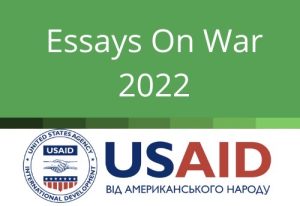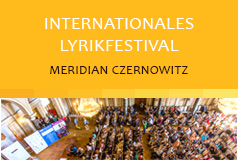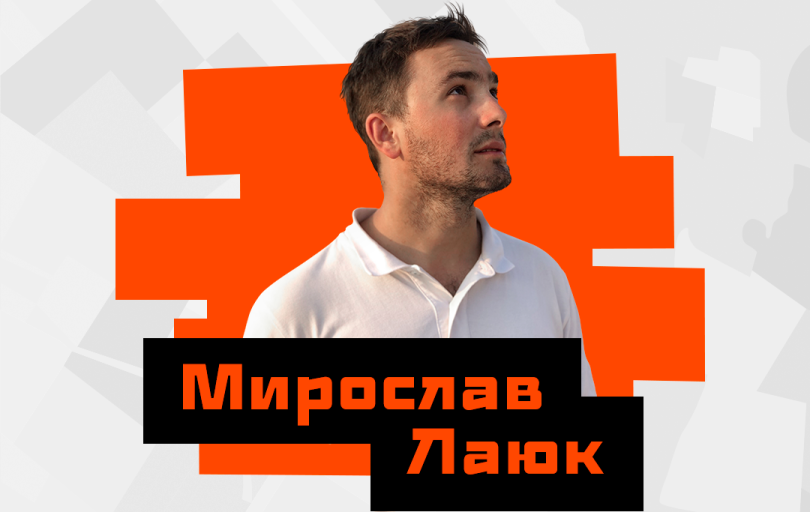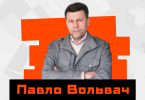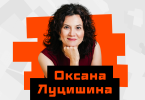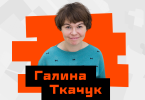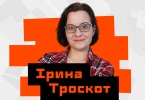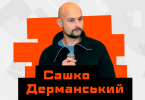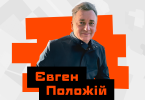The point of reference is a bird
I came across a wood pigeon’s nest on the burned balcony. Beside it, there was a charred gas meter, blackened balusters, and melted glass from the door. The mother of the chick is a blue-winged bird perched on a nearby oak tree. Half of the branches were broken and at the base of the trunk, there was a mark left by a shard fragment. Piles of garbage surrounded the area. The man who had been helping to clean up the area for several days pointed to a hole in the wall, „They fired from there.“ In the distance, there was a tank whose shell had hit this five-story building.
In Irpen, one out of every three buildings have been damaged. However, this place is also home to a large number of birds. Historically, these areas have always had a diverse avian population. When I lived in Vorzel, I would often wake up at four in the morning in April and May due to the loud noise made by the birds in the forests and groves. It was so loud that it would cause my ears to ache.
This spring, the area was almost deserted as the fires had destroyed many buildings and residents were just emerging from their basements or returning from evacuation. Wild pigeons, jays, and magpies made their nests freely in the burned buildings. Among them was our pigeon, its unformed feathers resembling orange sticks, as if it had climbed out of a haystack. With its big disproportionate beak and clumsy posture, it was ugly and defenseless. As we dumped cigarette butts from the fifth floor balcony, the pigeon no longer feared us. It was not afraid of the loud dumping of a large bag of construction waste; we placed iron parts we had found near the nest. And when I pulled the burnt metal scraps over there, the mother pigeon, which obviously brought the little one something to eat, broke off and flew startled to the edge of the oak tree with crushed wood. When we cleared the opposite balcony and moved the nest, I worried the adult bird would lose its young. But it easily flew to another crushed oak tree and waited for us to relocate it.
These days, speaking in an organized and „objective“ manner, building philosophical ideas or presenting systems is quite difficult.. To convey what war is, I chose this image, this magnifying glass, as a unit of measurement. The point of reference is a bird.
For several days now, drones have been attacking Kyiv. In the morning, you’re woken up by the sound of explosions, you drink coffee to the sound of sirens, and then you go to the store looking up at the sky. You think, What are those sounds? A drone? A rocket? In the evening, you contemplate spending the night in the corridor. And yet again, you come to appreciate the world through birds: they fly madly over the city, calling, chirping, and screeching.
How many of them were killed? I recently read about the birds of Mariupol from a professional ornithologist who reported the nearly total extermination of birds in the city of Mariupol due to shrapnel, fire, blast waves, and poison. Birds that once symbolized peace, such as swallows, buntings, titmice, and pigeons, have died by the tens of thousands.
I was walking down Volodymyrska Street in Kyiv, where a few days ago rockets flew, causing injuries to people, a playground, and several museum buildings. The monument to Mykhailo Hrushevsky is currently covered in scaffolding, with a crushed bench nearby and windows blocked with plywood on both sides. There are also small holes in the protective structure around the monument, and a crow sits on top, cawing. Another bird flew into my house three months ago and disappeared. I searched for her for two days until I found her in the bathroom, and there is nothing better than the moment you release a bird to freedom. Another bird is on the cover of Paul Eluard’s book. It may seem frivolous to focus on replenishing my home library during a war, but it brings me joy. Recently, I obtained the first Ukrainian edition of the Divine Comedy and The Illiad translated by Borys Ten, as well as a collection of poems by the „rehabilitated“ Mykola Zerov from 1966, where the date of his death is incorrectly listed as 1941. However, he was killed in Sandarmokh in 1937. I also found a volume of Eluard from 1975, which, as poets of that generation have told me, was one of the few books that let you breathe more freely during the rotten and oppressive Brezhnev era. On the book’s dust jacket is Picasso’s dove, which he painted for the First World Congress of Peace Supporters in 1949 as a response to World War II. This congress adopted a manifesto, calling on people to fight for peace.
Ever since, the white dove has become the most recognizable symbol of peace, but it appears unconvincing today. Similarly, the word „peace“ itself sounds unconvincing. What has happened to it? Today, the idea of „peace“ that would be accepted by a large portion of the world can simply mean the enslavement and genocide of Ukrainians. In new dictionaries, it will not be possible to define it in the same way as before our war. I think that the process of decommunization should include renaming streets and parks that were named „Peace“ by Soviet officials, as their definition of „peace“ has no connection with the real world.
Another bird – the last for this text – is the Bird of the Soul, which is the title of a book written by Vasyl Stus while in a Russian penal colony in the 1980s. We know little about the book, except that it contained around a hundred original poems and several translations of Rilke’s elegies. It is also known that the notebook he wrote it in was taken away by the supervisors after the poet’s untimely death. It would be a momentous event if this „bird“ were to be found and returned to us from Moscow’s archives, as it symbolizes freedom despite being written during Stus’ imprisonment.
„…And here are the birds‘ cries over the city again.“ As Stus wrote, „the raven clumsily circles.“ In his poetry, the „voiceless icy land“ and the „whirl of stellar galaxies“ are circling the raven. In the city, the lights go out from time to time. Stus ends the poem with the following lines: „The circling is age-old! // …paper, a pen and a cup. / And the candle flickers with the dawn, / which our great-grandson will call the day.“
October 20, 2022
Translated by Yulia Lyubka and Kate Tsurkan

